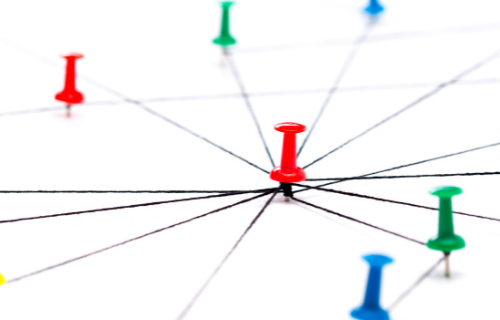Difference Between Gateway and Bridge
A wide variety of networks reside on the Internet, often running different software and using different hardware. Gateways and bridges are two devices that facilitate communication between these different networks. Because these two devices connect network entities, they are called connectivity devices. We look at the two networking devices in brief and try to understand some key differences between the two.

What is a Bridge?
A bridge is computer networking device that connects multiple local area networks (LANs) or network segments together to create an extended LAN. It is specifically a transparent bridge that connects two similar networks together that operate according to the same ruler or protocol. The main function of a bridge is to keep the traffic separated on both sides of the bridge. It allows data to be sent off on one network and onto the other so that the terminals on both the networks can communicate with each other as if they are a single network.
It wasn’t until the early 1980s that bridges became commercially available. Back then, bridges were used to connect and enable packet forwarding between homogenous networks. More recently, bridging between different networks has also been defined and standardized. Bridging occurs at the data link layer, which controls data flow, provides physical addressing, handles transmission errors, and handles access to the physical medium. In bridge, the format of packet is not changed. It can be thought of as a hardware-based multiport bridge.

What is a Gateway?
Gateways are packet switches that operate at multiple layers of the OSI model. Thus, gateways are the most complex of network devices. However, operating at different layers gives gateways increased flexibility compared to bridges in terms of translating addresses between dissimilar networks. A gateway is any hardware and software combination that connects two dissimilar networks together that operate according to different protocols. The gateway translates the protocols so that the computers on the two networks can communicate.
For example, a gateway can connect a LAN environment to a mainframe environment. They are completely different environments. LAN environment uses distributed processing, baseband communication, and the ASCII character set. Mainframe environment, on the other hand, uses centralized processing, broadband and baseband communication, and the EBCDIC character set. Each of the LAN protocols is translated to its mainframe counterpart by the gateway software. Gateways may also provide translation between the media and electrical specifications of two-device network.
Difference between Gateway and Bridge
Basics
– A bridge, specifically a transparent bridge, is a computer networking device that connects two similar networks together that operate according to the same ruler or protocol. It transmits the frames between two separated LAN segments. A gateway, on the other hand, is any hardware and software combination that connects two dissimilar networks together that operate according to different protocols. For example, a gateway can connect a LAN environment to a mainframe environment.
Operation Layer
– Bridging occurs at the data link layer, which controls data flow, provides physical addressing, handles transmission errors, and handles access to the physical medium. Gateways, on the other hand, are packet switches that operate at multiple layers of the OSI model. Hence, they are the most complex of network devices. However, operating at different layers gives gateways increased flexibility compared to bridges in terms of translating addresses between dissimilar networks.
Function
– The main function of a bridge is to keep the traffic separated on both sides of the bridge. It allows data to be sent off on one network and onto the other so that the terminals on both the networks can communicate with each other as if they are a single network. Gateways act as a translator between two different systems that use dissimilar communication protocols or data format. Gateways translate the protocols so that the computers on the two networks can communicate.
Gateway vs. Bridge: Comparison Chart

Summary
Bridges and gateways both are backbone devices of networking. The key difference between the two networking devices is that a bridge connects two networks together that operate under the same protocol whereas a gateway connects two dissimilar networks together that operate according to different protocols. Gateways can connect local networks to a network running a different protocol. They provide network users with access to machines not resident on their local networks.
FAQ:
What is a bridge router and gateway?
Bridge is used to connect two different LANs working on the same protocol, while a gateway is used to transfer the packet across networks employing a different protocol.
Can bridge be used as a gateway?
A bridge is used to connect two local area networks working on the same protocol. It is only used to transfer the frame to the expected destination. A gateway changes the packet format in one protocol to the packet format in another protocol.
What is the difference between bridge and router?
A bridge is a data link layer networking device that connects similar networks together – for example, Ethernet to Ethernet. A router operates at the network layer and is responsible for finding the shortest path for a packet.
What is the difference between repeater and gateway?
Gateway is a network entity that allows a network to interface with another network with different protocols. A repeater is a physical Wi-Fi access point that repeats wireless signals to extend their range without being connected with cable to a modem or router. A repeater basically extends the reach of your Wi-Fi network.
- Difference Between Caucus and Primary - June 18, 2024
- Difference Between PPO and POS - May 30, 2024
- Difference Between RFID and NFC - May 28, 2024
Search DifferenceBetween.net :
Leave a Response
References :
[0]Groth, David, et al. Network+ Study Guide: Exam N10-003. New Jersey, United States: John Wiley & Sons, 2005. Print
[1]Azarmsa, Reza. Telecommunications: A Handbook for Educators. New York, United States: Garland Publishing, Inc., 1993. Print
[2]Banzal, Shashi. Data and Computer Network Communication. New Delhi, India: Firewall Media, 2007. Print
